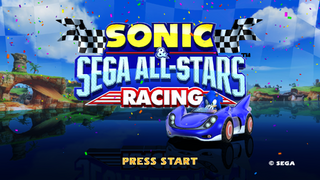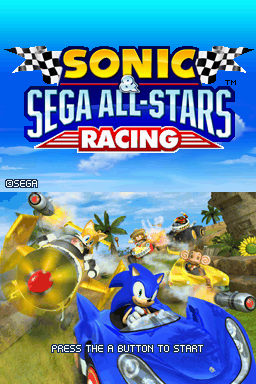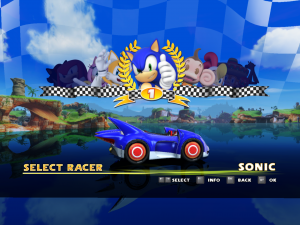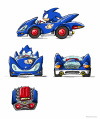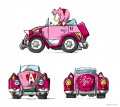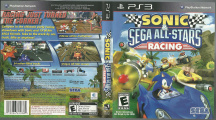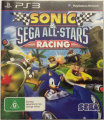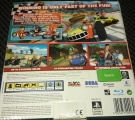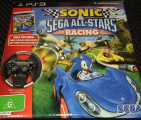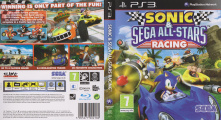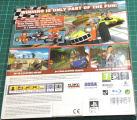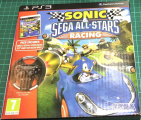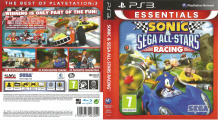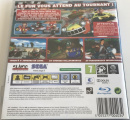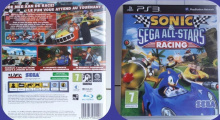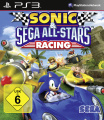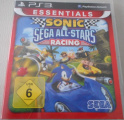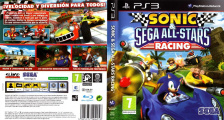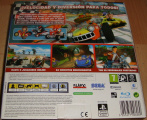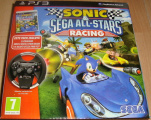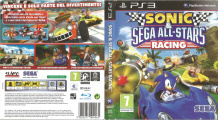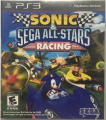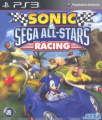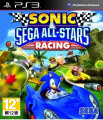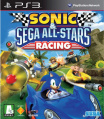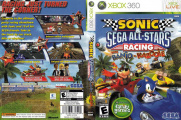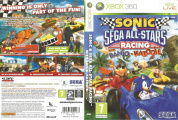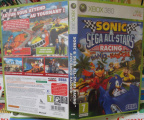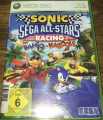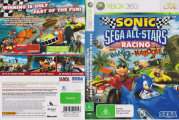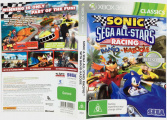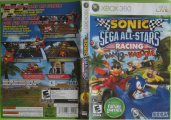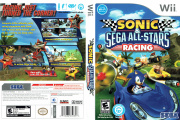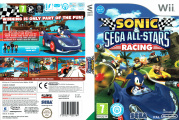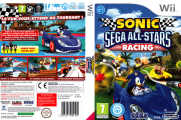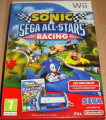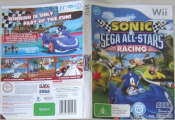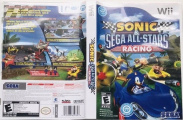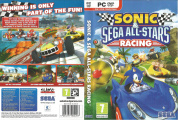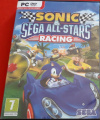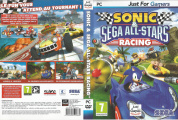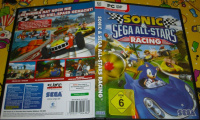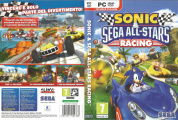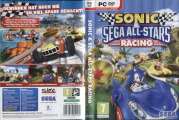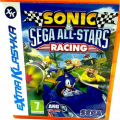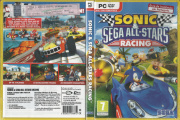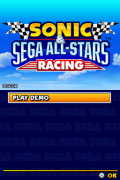Sonic & Sega All-Stars Racing
From Sonic Retro
- For the Sega RingWide version, see Sonic & Sega All-Stars Racing Arcade. For the J2ME version, see Sonic & Sega All-Stars Racing (J2ME).
| show;hide
| ||||||||||||||||||||||||||||||||||||||||||||||||||||||||||||||||||||||||||||||||||||||||||||||||||||||||||||||||||||||||||||||||||||||||||||||||||||||||||||||||||||||||||||||||||||||||||||||||||||||||||||||||||||||||||||||||||||||||||||||||||||||||||||||||||||||||||||||||||||||||||||||||||||||||||||||||||||||||||||||||||||||||||||||||||||||||||||||||||||||||||||||||||||||||||||||||||||||||||||||||||||||||||||||||||||||||||||||||||||||||||||||||||||||||||||||||||||||||||||||||||||||||||||||||||||||||||||||||||||||||||||||||||||||||||||
| Sonic & Sega All-Stars Racing | ||||||||||||||||||||||||||||||||||||||||||||||||||||||||||||||||||||||||||||||||||||||||||||||||||||||||||||||||||||||||||||||||||||||||||||||||||||||||||||||||||||||||||||||||||||||||||||||||||||||||||||||||||||||||||||||||||||||||||||||||||||||||||||||||||||||||||||||||||||||||||||||||||||||||||||||||||||||||||||||||||||||||||||||||||||||||||||||||||||||||||||||||||||||||||||||||||||||||||||||||||||||||||||||||||||||||||||||||||||||||||||||||||||||||||||||||||||||||||||||||||||||||||||||||||||||||||||||||||||||||||||||||||||||||||||
|---|---|---|---|---|---|---|---|---|---|---|---|---|---|---|---|---|---|---|---|---|---|---|---|---|---|---|---|---|---|---|---|---|---|---|---|---|---|---|---|---|---|---|---|---|---|---|---|---|---|---|---|---|---|---|---|---|---|---|---|---|---|---|---|---|---|---|---|---|---|---|---|---|---|---|---|---|---|---|---|---|---|---|---|---|---|---|---|---|---|---|---|---|---|---|---|---|---|---|---|---|---|---|---|---|---|---|---|---|---|---|---|---|---|---|---|---|---|---|---|---|---|---|---|---|---|---|---|---|---|---|---|---|---|---|---|---|---|---|---|---|---|---|---|---|---|---|---|---|---|---|---|---|---|---|---|---|---|---|---|---|---|---|---|---|---|---|---|---|---|---|---|---|---|---|---|---|---|---|---|---|---|---|---|---|---|---|---|---|---|---|---|---|---|---|---|---|---|---|---|---|---|---|---|---|---|---|---|---|---|---|---|---|---|---|---|---|---|---|---|---|---|---|---|---|---|---|---|---|---|---|---|---|---|---|---|---|---|---|---|---|---|---|---|---|---|---|---|---|---|---|---|---|---|---|---|---|---|---|---|---|---|---|---|---|---|---|---|---|---|---|---|---|---|---|---|---|---|---|---|---|---|---|---|---|---|---|---|---|---|---|---|---|---|---|---|---|---|---|---|---|---|---|---|---|---|---|---|---|---|---|---|---|---|---|---|---|---|---|---|---|---|---|---|---|---|---|---|---|---|---|---|---|---|---|---|---|---|---|---|---|---|---|---|---|---|---|---|---|---|---|---|---|---|---|---|---|---|---|---|---|---|---|---|---|---|---|---|---|---|---|---|---|---|---|---|---|---|---|---|---|---|---|---|---|---|---|---|---|---|---|---|---|---|---|---|---|---|---|---|---|---|---|---|---|---|---|---|---|---|---|---|---|---|---|---|---|---|---|---|---|---|---|---|---|---|---|---|---|---|---|---|---|---|---|---|---|---|---|---|---|---|---|---|---|---|---|---|---|---|---|---|---|---|---|---|---|---|---|---|---|---|---|---|---|---|---|---|---|---|---|---|---|---|---|---|---|---|---|---|---|---|---|---|---|---|---|---|---|---|---|---|---|---|---|---|---|---|---|---|---|---|---|---|---|---|---|---|---|---|---|---|---|---|---|---|---|---|---|---|---|---|---|---|---|---|---|---|---|---|---|---|---|---|---|---|---|---|---|---|---|
| | ||||||||||||||||||||||||||||||||||||||||||||||||||||||||||||||||||||||||||||||||||||||||||||||||||||||||||||||||||||||||||||||||||||||||||||||||||||||||||||||||||||||||||||||||||||||||||||||||||||||||||||||||||||||||||||||||||||||||||||||||||||||||||||||||||||||||||||||||||||||||||||||||||||||||||||||||||||||||||||||||||||||||||||||||||||||||||||||||||||||||||||||||||||||||||||||||||||||||||||||||||||||||||||||||||||||||||||||||||||||||||||||||||||||||||||||||||||||||||||||||||||||||||||||||||||||||||||||||||||||||||||||||||||||||||||
| System(s): Xbox 360, PlayStation 3, Wii, Nintendo DS, Windows PC, Mac OS X, iOS, Android, BlackBerry | ||||||||||||||||||||||||||||||||||||||||||||||||||||||||||||||||||||||||||||||||||||||||||||||||||||||||||||||||||||||||||||||||||||||||||||||||||||||||||||||||||||||||||||||||||||||||||||||||||||||||||||||||||||||||||||||||||||||||||||||||||||||||||||||||||||||||||||||||||||||||||||||||||||||||||||||||||||||||||||||||||||||||||||||||||||||||||||||||||||||||||||||||||||||||||||||||||||||||||||||||||||||||||||||||||||||||||||||||||||||||||||||||||||||||||||||||||||||||||||||||||||||||||||||||||||||||||||||||||||||||||||||||||||||||||||
| Publisher: Sega | ||||||||||||||||||||||||||||||||||||||||||||||||||||||||||||||||||||||||||||||||||||||||||||||||||||||||||||||||||||||||||||||||||||||||||||||||||||||||||||||||||||||||||||||||||||||||||||||||||||||||||||||||||||||||||||||||||||||||||||||||||||||||||||||||||||||||||||||||||||||||||||||||||||||||||||||||||||||||||||||||||||||||||||||||||||||||||||||||||||||||||||||||||||||||||||||||||||||||||||||||||||||||||||||||||||||||||||||||||||||||||||||||||||||||||||||||||||||||||||||||||||||||||||||||||||||||||||||||||||||||||||||||||||||||||||
| Developer: Sumo Digital Feral Interactive | ||||||||||||||||||||||||||||||||||||||||||||||||||||||||||||||||||||||||||||||||||||||||||||||||||||||||||||||||||||||||||||||||||||||||||||||||||||||||||||||||||||||||||||||||||||||||||||||||||||||||||||||||||||||||||||||||||||||||||||||||||||||||||||||||||||||||||||||||||||||||||||||||||||||||||||||||||||||||||||||||||||||||||||||||||||||||||||||||||||||||||||||||||||||||||||||||||||||||||||||||||||||||||||||||||||||||||||||||||||||||||||||||||||||||||||||||||||||||||||||||||||||||||||||||||||||||||||||||||||||||||||||||||||||||||||
| Peripherals supported: Wii Wheel, Nunchuk, Classic Controller, Rumble Pak | ||||||||||||||||||||||||||||||||||||||||||||||||||||||||||||||||||||||||||||||||||||||||||||||||||||||||||||||||||||||||||||||||||||||||||||||||||||||||||||||||||||||||||||||||||||||||||||||||||||||||||||||||||||||||||||||||||||||||||||||||||||||||||||||||||||||||||||||||||||||||||||||||||||||||||||||||||||||||||||||||||||||||||||||||||||||||||||||||||||||||||||||||||||||||||||||||||||||||||||||||||||||||||||||||||||||||||||||||||||||||||||||||||||||||||||||||||||||||||||||||||||||||||||||||||||||||||||||||||||||||||||||||||||||||||||
| Genre: Racing[1] | ||||||||||||||||||||||||||||||||||||||||||||||||||||||||||||||||||||||||||||||||||||||||||||||||||||||||||||||||||||||||||||||||||||||||||||||||||||||||||||||||||||||||||||||||||||||||||||||||||||||||||||||||||||||||||||||||||||||||||||||||||||||||||||||||||||||||||||||||||||||||||||||||||||||||||||||||||||||||||||||||||||||||||||||||||||||||||||||||||||||||||||||||||||||||||||||||||||||||||||||||||||||||||||||||||||||||||||||||||||||||||||||||||||||||||||||||||||||||||||||||||||||||||||||||||||||||||||||||||||||||||||||||||||||||||||
| Number of players: 1-4 | ||||||||||||||||||||||||||||||||||||||||||||||||||||||||||||||||||||||||||||||||||||||||||||||||||||||||||||||||||||||||||||||||||||||||||||||||||||||||||||||||||||||||||||||||||||||||||||||||||||||||||||||||||||||||||||||||||||||||||||||||||||||||||||||||||||||||||||||||||||||||||||||||||||||||||||||||||||||||||||||||||||||||||||||||||||||||||||||||||||||||||||||||||||||||||||||||||||||||||||||||||||||||||||||||||||||||||||||||||||||||||||||||||||||||||||||||||||||||||||||||||||||||||||||||||||||||||||||||||||||||||||||||||||||||||||
|
Sonic & Sega All-Stars Racing (ソニック&セガオールスターズ レーシング) is a racing game developed by Sumo Digital. It stars characters from a wide range of Sega games, similar to the previously released Sega Superstars Tennis, also by Sumo Digital. Unlike Sega Superstars Tennis, Sonic & Sega All-Stars Racing is more skewed towards the Sonic the Hedgehog franchise, with roughly half the tracks based on the series and appoximately one third of the characters.
Its development was announced 28 May 2009,[47] with the game being released in early 2010. It has so far been released for five home systems, including the Xbox 360, PlayStation 3, Wii, Nintendo DS, and PC. An arcade version of the game, titled Sonic & Sega All-Stars Racing Arcade and which runs on Sega's RingWide arcade hardware, was released in 2011. An iOS version was shown at E3 2011; this version is the only version of the game released in Japan.
The game is very similar to Mario Kart in design - each character has a vehicle (ranging from cars, bikes and even planes) and competes across several themed tracks in an attempt to finish first. Along the way there are power-ups, which can help the player or hinder others. Some tracks have multiple paths, and many are littered with obstacles which serve to slow the player down.
On 30 April 2012, a sequel, Sonic & All-Stars Racing Transformed was announced for all major platforms.
Contents
Gameplay
Characters

|
Sonic the Hedgehog |
|---|---|
|
Series: Sonic the Hedgehog Vehicle: All-Star Move: | |

|
Miles "Tails" Prower |
|
Series: Sonic the Hedgehog Vehicle: All-Star Move: Tails Tornado | |

|
Knuckles the Echidna |
|
Series: Sonic the Hedgehog Vehicle: All-Star Move: | |

|
Amy Rose |
|
Series: Sonic the Hedgehog Vehicle: All-Star Move: | |

|
Shadow the Hedgehog |
|
Series: Sonic the Hedgehog Vehicle: All-Star Move: | |

|
Dr. Eggman |
|
Series: Sonic the Hedgehog Vehicle: All-Star Move: Missile Madness | |

|
Big the Cat |
|
Series: Sonic the Hedgehog Vehicle: All-Star Move: | |

|
AiAi |
|
Series: Vehicle: Blazing Banana All-Star Move: Super Monkey Roll | |

|
Billy Hatcher |
|
Vehicle: Racing Rooster All-Star Move: Egg Rodeo | |

|
Amigo |
|
Series: Vehicle: Sun Buggy All-Star Move: Samba De Party | |

|
Ulala |
|
Series: Vehicle: Astro Glider All-Star Move: Tension Blast | |

|
Beat |
|
Series: Vehicle: De La Custom GGs All-Star Move: Tag Jamming | |

|
B.D. Joe |
|
Series: Vehicle: Crazy Taxi All-Star Move: Crazy Dash | |
 
|
Zobio & Zobiko |
|
Series: Vehicle: Hotrod of Horror All-Star Move: Run-A-Way Love | |
| In the Nintendo DS version, Zobio races alone. | |

|
Ryo Hazuki |
|
Series: Vehicle: Naoyuki's Motorcycle All-Star Move: Working Man | |
 
|
Jacky Bryant & Akira Yuki |
|
Series: Vehicle: Red Lightning All-Star Move: Virtua Fight | |
| In the Nintendo DS version, Jacky races alone. | |
| ChuChus | |
|
Series: Vehicle: ChuChu Rocket All-Star Move: Cat-Walker | |
| Chuih, Chubei, Chupea and Chubach race together in a single vehicle. In the Nintendo DS version, Chuih races alone. | |

|
Bonanza Bros. |
|
Series: Vehicle: Get-A-Way Wagon All-Star Move: Blimp Strike | |
| In the Nintendo DS version, Mobo races alone. | |

|
Alex Kidd |
|
Series: Vehicle: Sukopako Motorcycle All-Star Move: Peticopter | |

|
Opa-Opa |
|
Series: Vehicle: Opa-Opa (himself) All-Star Move: Fantasy Thorn | |
| Banjo & Kazooie (Xbox 360 only) | |
|
Series: Banjo-Kazooie Vehicle: Bolt Bucket All-Star Move: Jiggy Rain | |
| Xbox Live Avatar (Xbox 360 only) | |
|
Series: Xbox Live Vehicle: All-Star Move: Party Power | |
| Mii (Wii only) | |
|
Series: Mii Vehicle: All-Star Move: Parade Power | |
| Ryo Hazuki: Forklift (DLC) | |
|
Series: Vehicle: Forklift All-Star Move: Working Man | |
| Metal Sonic (DLC) | |
|
Series: Sonic the Hedgehog Vehicle: All-Star Move: Maximum Overdrive | |
Items
Some of the items in this list can come in a set of three, and can all be used at the same time by holding the "Item" button for one second.
| High Speed Shoe | |
|---|---|
| Gives the user a temporary burst of speed. Can also come in a set of three, which can be activated all at once for a very long speed boost. | |
| K.O. Glove | |
| Fires in a straight line and ricochets off walls to send rivals spinning. Can also come in a set of three - when used simultaneously, two of the gloves will be fired at 30-degree angles. | |
| Rocket | |
| Homes in on the nearest rival in front to send them spinning. Can also come in a set of three - when used simultaneously, they will target the nearest three rivals in front. | |
| Mine | |
| Can be placed behind the user's vehicle, and will explode after a short while or when a rival collides with it. Can also come in a set of three, which can be laid down in a line simultaneously. | |
| Shield | |
| Protects the user from a single attack for a short period of time. | |
| Giant Rocket | |
| Fires a giant rocket that follows the track. Press the "Item" button again to detonate it and cause any rivals caught in the blast to spin out. | |
| Mega Horn | |
| Creates a destructive sound wave that spins out nearby rivals. | |
| Confusing Star | |
| Homes in on the nearest rival in front and flips their screen upside down for a short while in addition to making them spin out. | |
| Pocket Rainbow | |
| Can be placed behind the user's vehicle, and any rival that drives into it will have their screen covered in a rainbow of dazzling colours. | |
| Bowling Bomb | |
| Fires a bomb that tumbles out in front of the user and explodes. Can also come in a set of three. In the Nintendo DS version, the bomb is launched in an arc and explodes upon contact with the ground. |
Missions
| |
Main article: Sonic & Sega All-Stars Racing/Missions |
History
Development
A number of characters were once planned for the game but ultimately failed to make the final cut, often due to licensing issues. The reveal of Xbox-exclusive characters has suggested characters exclusive to the PlayStation 3 version of the game may emerge in the form of downloadable content in the future.
Several characters were confirmed to have existed in the game's development timeline at some point.
- Mario. Briefly considered to be a Wii exclusive character, Nintendo and Sega agreed that Mario/Sonic crossovers would be best suited in the Mario & Sonic at the Olympic Games franchise, so the character was not added.
- Segata Sanshiro. The martial artist mascot of the Sega Saturn was revealed to have been discussed at one point with his vehicle being a Sega Saturn. Concept art is said to exist, but never made the final character roster.
- ToeJam and Earl. Disputes with Mark Voorsanger, the creator of the duo meant that insufficient time was left to include these characters. Fan feedback has since prompted a rethink on Voorsanger's part, who decided to ask Sega again on the matter. No word has been spoken on this issue since.
- Gilius Thunderhead. Discussed at an early stage of development, the Golden Axe character was scrapped for unknown reasons (he had previously appeared in Sega Superstars Tennis). Supposedly he would have ridden on a Chickenleg monster from the series. He does appear in the game's sequel, Sonic & All-Stars Racing Transformed.
- Vyse. This character from Skies of Arcadia was briefly in an interview, but was never mentioned again. He does appear in the game's sequel, Sonic & All-Stars Racing Transformed.
The Sonic levels are based on stages from Sonic Heroes.
Sales data
| Number of copies sold | Sega IR Reference | Platforms | Regions | Cumulative sales total |
|---|---|---|---|---|
| 1,070,000 | [48] | PS3/360/Wii/DS | US/EU | 1,070,000 |
Versions
Sonic & Sega All-Stars Racing has many console-specific features though the core gameplay is retained across all ports.The Xbox 360 version has the extended title of Sonic & Sega All-Stars Racing with Banjo-Kazooie as it features Banjo and Kazooie from the Banjo-Kazooie series (which are now exclusive to Microsoft consoles). The Xbox 360 version also allows users to play as Avatars, while the Wii version allows the use of Miis. Both the Xbox 360 and PlayStation 3 versions can benefit from downloadable content.
The console versions of the game supports up to eight-player online play as well as four-player split screen multiplayer. The PC version only allows local split-screen races, presumably due to fears of players hacking their statistics, however online multiplayer was later added to the Mac OS X version. "Bandwidth issues" prevent players from using All-Star power-ups online.
The Nintendo DS version has several stages that were changed from the console versions, most notably in Carnival Town. While all racers are playable, they have been altered so that there is only one character per vehicle. Jacky's All-Star move is changed to reflect this. Most of the music was also remixed by Orchestral Media Developments, unlike Sega Superstars Tennis, where the music was mostly the same as it was in the console versions. It also only supported up to 4 players online and has support for DS Download Play, although when using Download Play only the characters and courses that are unlocked by default can be selected, and are chosen for both players by the host before any data is sent to the client. This version was used as the basis for the later iOS and Android versions.
There was also a version for J2ME phones developed by Gameloft.
Version history
| |
Main article: Sonic & Sega All-Stars Racing/Changelog |
| System | Version | Size | Date | Comment | Ref | Icon | |
|---|---|---|---|---|---|---|---|
| 1.0 | 4.12GB | 2013-01-31 | [49] | ||||
| 1.0.1 | 451MB | 2013-09-24 | [1] | ||||
| 1.9.0 | 415MB | 2013-03-06 | [50] | ||||
| 1.8 | 310MB | 2012-07-26 | [51] | ||||
| 1.7 | 2012-07-26 | [52] | |||||
| 1.5 | 2012-06-23 | [52] | |||||
| 1.4 | 2012-06-05 | [52] | |||||
| 1.3 | 2012-05-24 | [52] | |||||
| 1.2 | 337MB | 2012-05-03 | [53] | ||||
| 1.01 | 293MB | 2011-06-28 | [54] | ||||
| 1.0 | 314MB | 2011-06-23 | [38] |
Downloadable content
| |
Main article: Sonic & Sega All-Stars Racing/Downloadable content |
Production credits
| This article needs a list of production credits, either from the game itself, a manual, or other reliable source. |
Manuals
| |
This instruction manual requires additional or replacement scans. |
Promotional material
Artwork
Concept art
Box art
Physical scans
PlayStation 3 version
| PlayStation 3, UK |
|---|
| PlayStation 3, BX† |
|---|
| PlayStation 3, BX† (Essentials) |
|---|
| PlayStation 3, AT |
|---|
|
|
| PlayStation 3, PT |
|---|
|
|
| PlayStation 3, BR |
|---|
|
|
Xbox 360 version
| Xbox 360, AT |
|---|
|
|
Wii version
| Wii, BX† |
|---|
| Wii, CA |
|---|
PC version
| PC, UK |
|---|
| |
| PC, UK (GSP) |
|---|
| PC, FR (Just For Gamers) |
|---|
| PC, RU |
|---|
|
|
Nintendo DS version
| Nintendo DS, US |
|---|
| Nintendo DS, BX† |
|---|
Technical information
ROM dump status
| System | Hash | Size | Build Date | Source | Comments | |||||||||
|---|---|---|---|---|---|---|---|---|---|---|---|---|---|---|
| ? |
|
2009-12-01 | Page | |||||||||||
| ✔ |
|
4,699,979,776 | Disc (US) | |||||||||||
| ✔ |
|
4,699,979,776 | Disc (EU) | |||||||||||
| ? |
|
64MB | Card (US) | |
||||||||||
| ✔ |
|
64MB | Card (EU) | |
||||||||||
| ? |
|
1.77MB | Digital download (US) | Nintendo Channel demo | |
Page | ||||||||
| ? |
|
1.77MB | Digital download (EU) | Nintendo Channel demo | |
Page |
External links
- Nintendo catalogue pages: Wii: US, UK; Nintendo DS: UK
- Sonic & Sega All-Stars Racing on PlayStation.com: US, UK, KR
- Sonic & Sega All-Stars Racing on PlayStation Store: US, UK, AU, KR
- Sonic & Sega All-Stars Racing on Steam
- Sonic & Sega All-Stars Racing on iTunes (Mac): US, UK (offline)
- Sonic & Sega All-Stars Racing on iTunes (iOS): JP, US, UK (offline)
- Sonic & Sega All-Stars Racing on Google Play (offline)
- Sonic & Sega All-Stars Racing on BlackBerry World
- Sonic & Sega All-Stars Racing at Feral Interactive
- Sonic & Sega All-Stars Racing on Xbox Marketplace: JP, US, UK, AU, KR
References
- ↑ 1.0 1.1 Google Play (com.sega.ssasr) (Wayback Machine: 2013-09-30 12:39)
- ↑ http://blogs.sega.com/2010/02/23/sonic-sega-all-stars-racing-on-sale-now/ (Wayback Machine: 2017-06-29 01:18)
- ↑ Xbox.com (en-US; s/sonicandsegaallstarsracing) (Wayback Machine: 2010-03-07 16:57)
- ↑ Xbox.com (en-CA; s/sonicandsegaallstarsracing) (Wayback Machine: 2010-07-24 03:33)
- ↑ http://www.softclub.ru/games/xbox-360/8629-sonic-sega-allstars-racing (Wayback Machine: 2018-07-23 22:17)
- ↑ 6.0 6.1 Xbox LIVE Marketplace (en-US; Sonic-SEGA-Racing/66acd000-77fe-1000-9115-d80253450815) (Wayback Machine: 2011-04-27 15:04)
- ↑ http://blogs.sega.com/2011/09/06/games-on-demand-price-drops-on-vanquish-sonic-segas-all-stars-racing-and-more/ (Wayback Machine: 2017-07-19 16:32)
- ↑ 8.0 8.1 8.2 Xbox LIVE Marketplace (en-GB; Sonic-SEGA-Racing/66acd000-77fe-1000-9115-d80253450815) (Wayback Machine: 2011-04-27 03:59)
- ↑ Xbox LIVE Marketplace (en-AU; Sonic-SEGA-Racing/66acd000-77fe-1000-9115-d80253450815) (Wayback Machine: 2010-11-29 20:03)
- ↑ 10.0 10.1 10.2 Xbox LIVE Marketplace (fr-fr; Sonic-SEGA-Racing/66acd000-77fe-1000-9115-d80253450815) (Wayback Machine: 2011-04-24 14:30)
- ↑ 11.0 11.1 11.2 Xbox LIVE Marketplace (de-DE; Sonic-SEGA-Racing/66acd000-77fe-1000-9115-d80253450815) (Wayback Machine: 2012-01-16 12:22)
- ↑ Xbox LIVE Marketplace (ko-KR; Sonic-SEGA-Racing/66acd000-77fe-1000-9115-d80253450815) (Wayback Machine: 2015-06-29 21:25)
- ↑ Xbox LIVE Marketplace (ja-JP; Sonic-SEGA-Racing/66acd000-77fe-1000-9115-d80253450815) (Wayback Machine: 2013-06-15 03:01)
- ↑ 14.0 14.1 14.2 http://blogs.sega.com/2010/02/23/sonic-sega-all-stars-racing-on-sale-now/ (Wayback Machine: 2017-07-09 16:29)
- ↑ PlayStation Store (en-gb; EP0177-BLES00750_00-DISCONLYPARENT00) (Wayback Machine: 2018-04-03 00:40)
- ↑ PlayStation Store (fr-fr; EP0177-BLES00750_00-DISCONLYPARENT00) (Wayback Machine: 2018-04-03 00:41)
- ↑ PlayStation Store (de-de; EP0177-BLES00750_00-DISCONLYPARENT00) (Wayback Machine: 2018-12-10 21:55)
- ↑ PlayStation Store (es-es; EP0177-BLES00750_00-DISCONLYPARENT00) (Wayback Machine: 2018-12-10 22:01)
- ↑ PlayStation Store (en-au; EP0177-BLES00750_00-DISCONLYPARENT00) (Wayback Machine: 2018-04-03 00:40)
- ↑ http://www.playstation.co.kr/game/1883 (archive.today)
- ↑ http://www.softclub.ru/games/ps3/8630-sonic-sega-allstars-racing (Wayback Machine: 2017-04-23 11:22)
- ↑ https://www.nintendo.co.uk/Games/Wii/Sonic-SEGA-All-Stars-Racing-283168.html (archive.today)
- ↑ https://www.nintendo.fr/Jeux/Wii/Sonic-SEGA-All-Stars-Racing-283168.html (archive.today)
- ↑ https://www.nintendo.de/Spiele/Wii/Sonic-SEGA-All-Stars-Racing-283168.html (archive.today)
- ↑ https://www.nintendo.es/Juegos/Wii/Sonic-SEGA-All-Stars-Racing-283168.html (archive.today)
- ↑ https://www.nintendo.it/Giochi/Wii/Sonic-SEGA-All-Stars-Racing-283168.html (archive.today)
- ↑ https://www.nintendo.nl/Games/Wii/Sonic-SEGA-All-Stars-Racing-283168.html (archive.today)
- ↑ http://www.softclub.ru/games/wii/8631-sonic-sega-allstars-racing (Wayback Machine: 2018-07-23 22:16)
- ↑ https://www.nintendo.co.uk/Games/Nintendo-DS/Sonic-SEGA-All-Stars-Racing-272970.html (archive.today)
- ↑ https://www.nintendo.fr/Jeux/Nintendo-DS/Sonic-SEGA-All-Stars-Racing-272970.html (archive.today)
- ↑ https://www.nintendo.de/Spiele/Nintendo-DS/Sonic-SEGA-All-Stars-Racing-272970.html (archive.today)
- ↑ https://www.nintendo.at/Spiele/Nintendo-DS/Sonic-SEGA-All-Stars-Racing-272970.html (archive.today)
- ↑ https://www.nintendo.nl/Games/Nintendo-DS/Sonic-SEGA-All-Stars-Racing-272970.html (archive.today)
- ↑ https://www.nintendo.es/Juegos/Nintendo-DS/Sonic-SEGA-All-Stars-Racing-272970.html (archive.today)
- ↑ https://www.nintendo.it/Giochi/Nintendo-DS/Sonic-SEGA-All-Stars-Racing-272970.html (archive.today)
- ↑ http://www.softclub.ru/games/pc/21230-sonic-sega-allstars-racing-khoroshie-igry (Wayback Machine: 2019-03-21 16:08)
- ↑ 37.0 37.1 37.2 37.3 http://store.steampowered.com:80/app/34190/ (Wayback Machine: 2010-03-05 11:57)
- ↑ 38.0 38.1 38.2 http://itunes.apple.com/us/app/sonic-sega-all-stars-racing/id429208823?mt=8 (Wayback Machine: 2011-06-27 05:06)
- ↑ http://blogs.sega.com/2011/09/01/sonic-and-sega-all-stars-racing-on-ios-fire-sale/ (Wayback Machine: 2015-09-06 06:38)
- ↑ http://itunes.apple.com/de/app/sonic-sega-all-stars-racing/id429208823?mt=8 (Wayback Machine: 2011-07-04 10:29)
- ↑ http://itunes.apple.com/gb/app/sonic-sega-all-stars-racing/id429208823?mt=8 (Wayback Machine: 2011-07-08 06:00)
- ↑ 42.0 42.1 http://www.4gamer.net/games/143/G014398/
- ↑ http://itunes.apple.com/au/app/sonic-sega-all-stars-racing/id429208823?mt=8 (Wayback Machine: 2011-07-05 18:36)
- ↑ https://itunes.apple.com/us/app/sonic-sega-all-stars-racing/id530435997?mt=12 (Wayback Machine: 2013-05-09 13:27)
- ↑ 45.0 45.1 45.2 45.3 http://blogs.sega.com/2013/09/20/sonic-sega-all-stars-racing-arrives-on-android/ (Wayback Machine: 2017-08-15 10:10)
- ↑ 46.0 46.1 http://www.4gamer.net/games/234/G023443/
- ↑ http://www.eurogamer.net:80/articles/sega-announces-new-sonic-racer (Wayback Machine: 2011-09-09 01:57)
- ↑ File:IR EN 2010-05-14.pdf
- ↑ https://itunes.apple.com/us/app/sonic-sega-all-stars-racing/id530435997?mt=12 (Wayback Machine: 2013-05-09 13:27)
- ↑ https://itunes.apple.com/us/app/sonic-sega-all-stars-racing/id429208823?mt=8 (Wayback Machine: 2013-03-07 23:17)
- ↑ http://itunes.apple.com/us/app/sonic-sega-all-stars-racing/id429208823?mt=8 (Wayback Machine: 2013-01-22 07:29)
- ↑ 52.0 52.1 52.2 52.3 http://itunes.apple.com/us/app/sonic-sega-all-stars-racing/id429208823?mt=8 (Wayback Machine: 2018-08-30 11:17)
- ↑ http://itunes.apple.com/us/app/sonic-sega-all-stars-racing/id429208823?mt=8 (Wayback Machine: 2012-05-15 12:23)
- ↑ http://itunes.apple.com/us/app/sonic-sega-all-stars-racing/id429208823?mt=8 (Wayback Machine: 2011-09-02 01:50)
| Sonic & Sega All-Stars Racing | |
|---|---|
|
Main page (Arcade|J2ME) Magazine articles Hidden content |
show;hide
Battle arenas:
Nintendo DS only: DLC: |
| Sonic the Hedgehog games for the following systems | |
|---|---|
| 2006 Sonic the Hedgehog 2008 Sonic Unleashed 2009 Sonic's Ultimate Genesis Collection 2010 Sonic & Sega All-Stars Racing 2011 Sonic Generations 2012 Sonic & All-Stars Racing Transformed | |
| 2005 Sonic Rush 2007 Sonic Rush Adventure 2008 Mario & Sonic at the Olympic Games | Sonic Chronicles: The Dark Brotherhood 2009 Mario & Sonic at the Olympic Winter Games | Sega Fun Pack: Sonic Rush & Super Monkey Ball: Touch & Roll 2010 Sonic & Sega All-Stars Racing | Sonic Classic Collection | Sonic Colours Unknown date Super Speed Pack (201x) Unreleased Sonic DS
|
